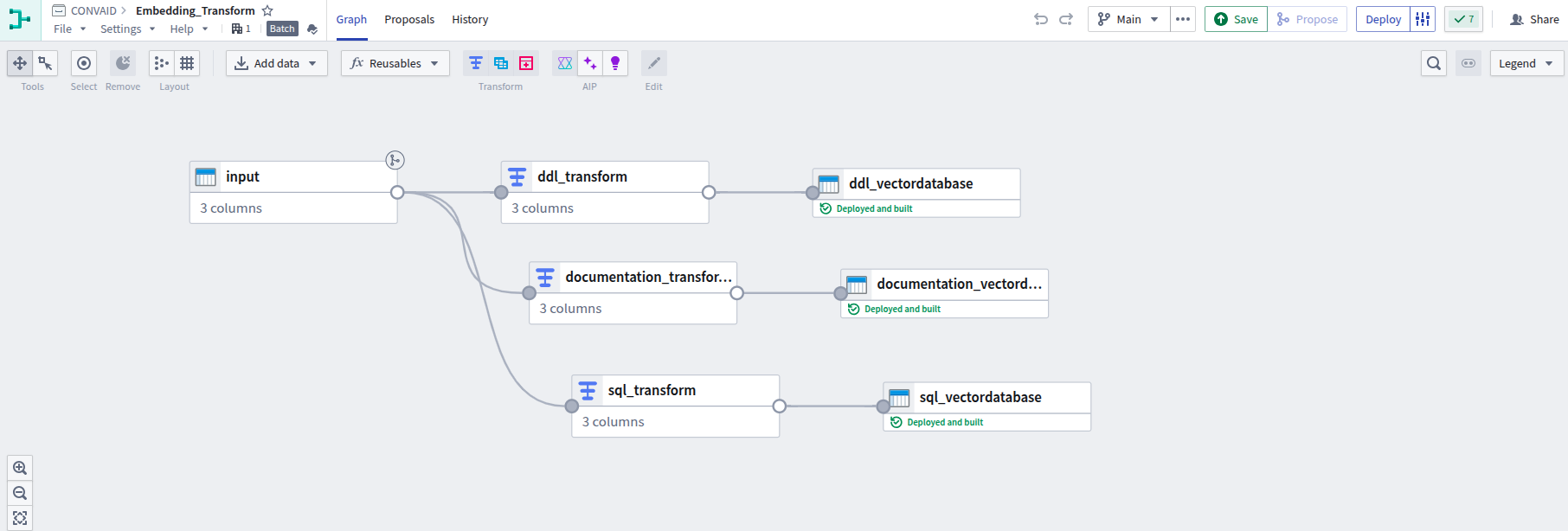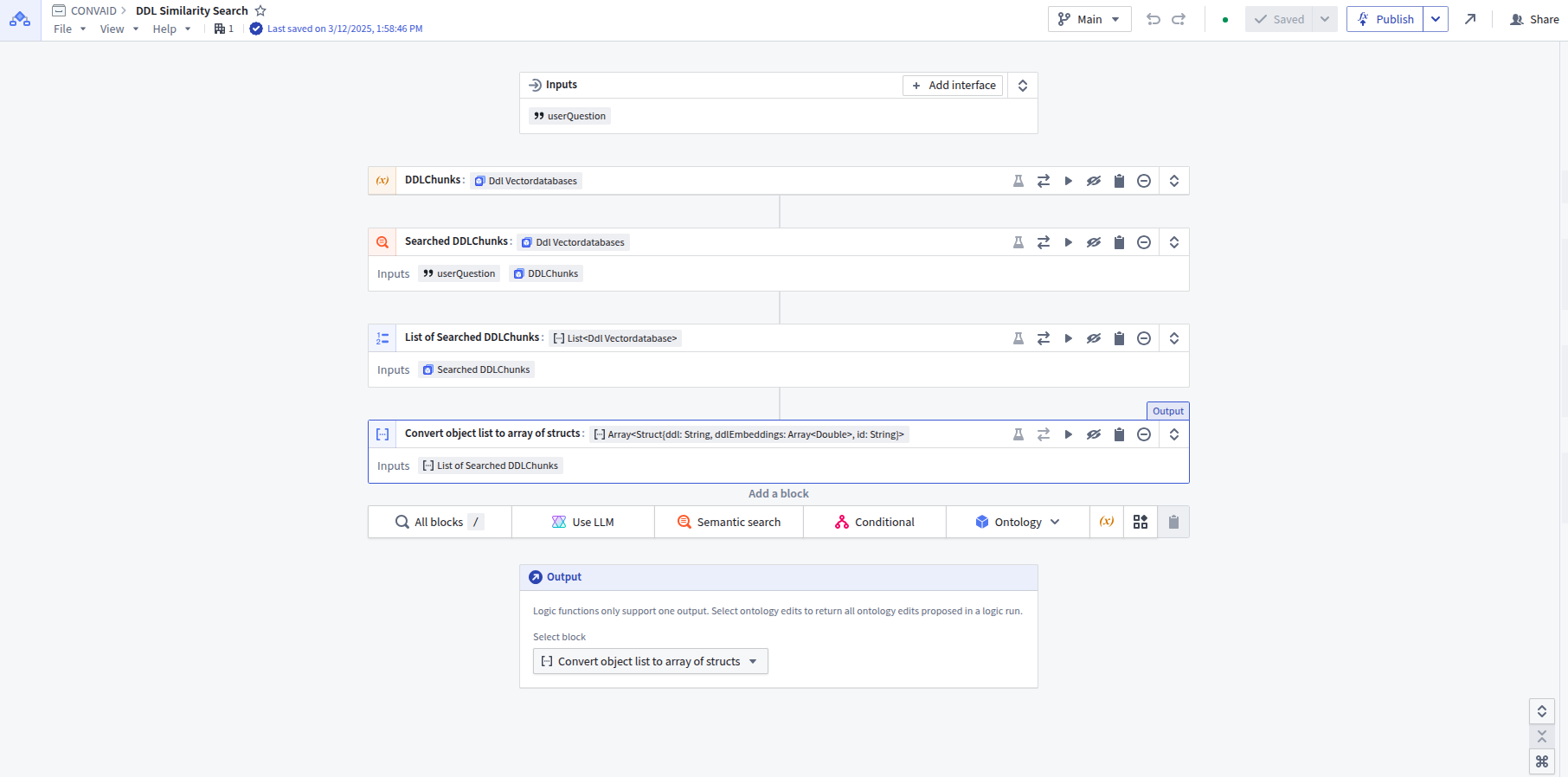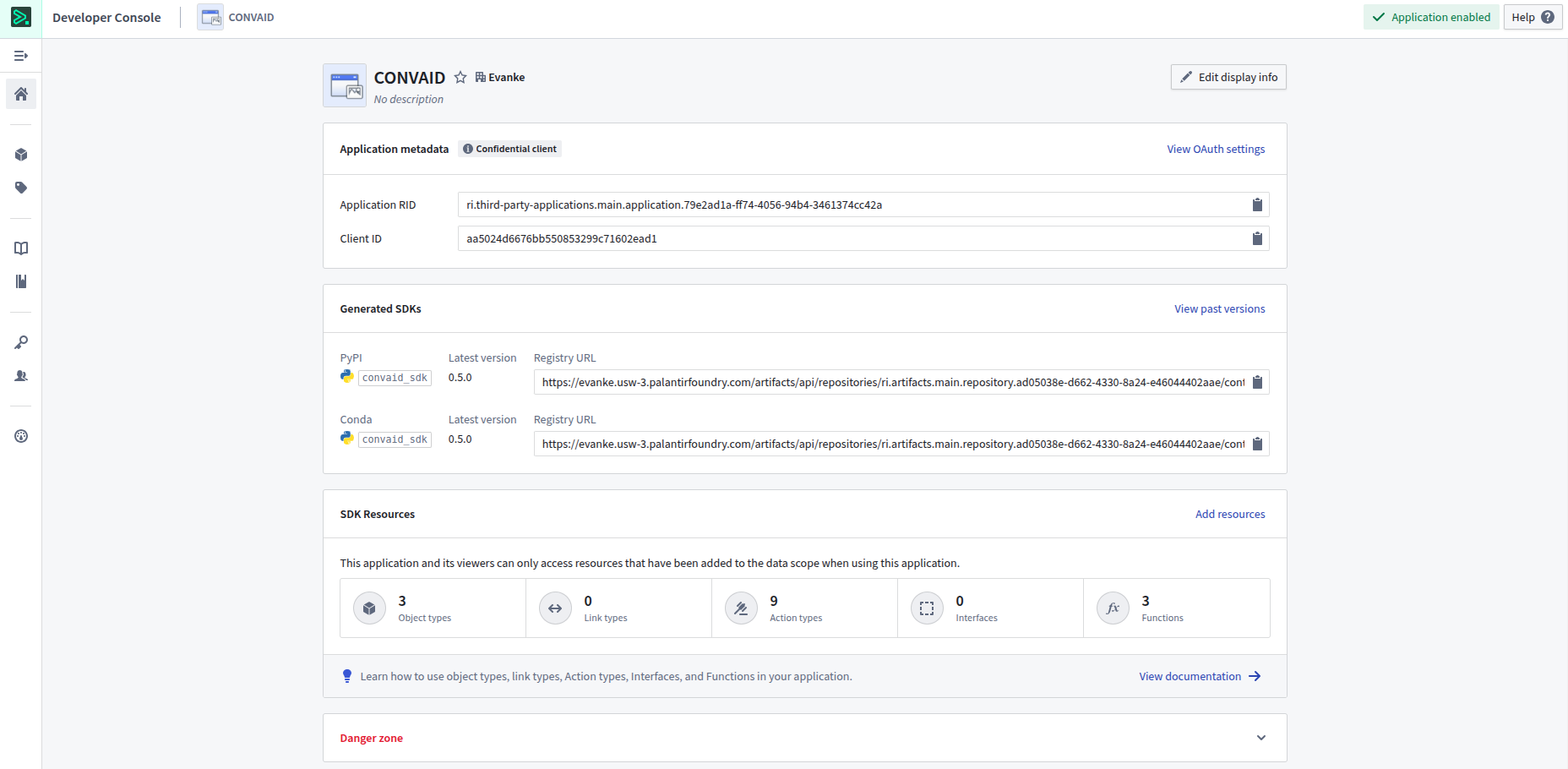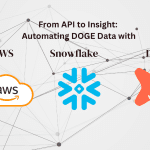Introduction
As part of my work on CONVAID, a powerful text-to-SQL system, I had the opportunity to enhance its capabilities by integrating Palantir Ontology as the vector database. This transformation introduced a more structured and streamlined approach to SQL query generation. Leveraging Palantir Foundry’s advanced tools, I tackled the challenges of embedding generation, ontology creation, and building retrieval pipelines. In this blog, I’ll walk through the process of enhancing CONVAID—from data ingestion and processing to integrating AIP pipelines and SDK generation.
Data Upload and Preprocessing
The journey began with uploading critical datasets—DDLs, documentation, and question-SQL pairs—to Palantir Foundry. These datasets became the backbone of CONVAID’s improved embedding and similarity search capabilities.
- DDL: Defined schema structures and relationships.
- Documentation: Provided contextual information to enrich query understanding.
- Question-SQL Pairs: Mapped natural language queries to their SQL equivalents for training and evaluation.
Data Processing and Embedding Generation

To transform this raw data into a vectorized format, I built multiple pipelines using Palantir’s Pipeline Builder. I chose OpenAI’s text-embedding-ada-002 model to generate embeddings that could power accurate similarity searches.
Steps I Took:
- Chunking and Preprocessing: Split and enriched text from each dataset to optimize embedding quality.
- Embedding Generation: Created vector embeddings and stored them for downstream similarity matching.
- Dataset Creation: Generated three distinct datasets with embedded vectors for DDL, documentation, and question-SQL pairs.
Ontology Creation in Palantir
Once the embeddings were ready, I created ontologies for each dataset to facilitate efficient similarity searches. These ontologies became the foundation for enabling fast and accurate query matching.
My Approach:
- Defined object types for DDL, documentation, and SQL pairs.
- Configured embedding columns to store vector data and enable cosine similarity search.
- Ensured seamless integration with retrieval pipelines for query matching.
Building AIP Pipelines for Retrieval

To enable retrieval and query matching, I developed three Analytic Integration Pipelines (AIP) to handle similarity search and post-processing for each dataset. These pipelines accept user queries, perform similarity searches, and return the top 10 matching entities.
Pipeline Highlights:
- DDL Pipeline: Retrieves relevant database schema information.
- Documentation Pipeline: Returns related contextual documentation.
- Question-SQL Pipeline: Matches user queries to the most appropriate SQL commands.
Developer Console and SDK Generation

To streamline integration, I utilized Palantir’s Developer Console to register ontologies and pipelines and generate an SDK named convaid_sdk. This SDK bridged Palantir’s APIs with CONVAID’s workflow, enabling efficient vector database operations.
What I Did:
- Registered resources in the Developer Console.
- Defined action types and ontology interfaces.
- Generated and integrated the SDK to facilitate seamless operations within CONVAID.
Integration with the CONVAID Workflow
I developed a custom class to integrate Palantir’s SDK with CONVAID’s existing framework. This class streamlined vector database operations, enabling faster query matching and refined SQL generation.
Key Contributions:
- Embedding Retrieval: Leveraged similarity search to identify relevant embeddings.
- Data Enrichment: Enhanced retrieved entities to refine SQL generation.
- Query Execution: Sent generated SQL queries to the appropriate database for execution.
Conclusion
Integrating Palantir Ontology into CONVAID was an exciting and rewarding journey. This enhancement not only improved query accuracy and precision but also optimized the entire workflow by leveraging Palantir’s robust ecosystem. Reflecting on this experience, I’m excited about how this integration pushes the boundaries of natural language query processing and SQL generation.
By sharing this journey, I hope to highlight the practical challenges and innovative solutions involved in enhancing AI systems with enterprise-grade technologies like Palantir Foundry.





